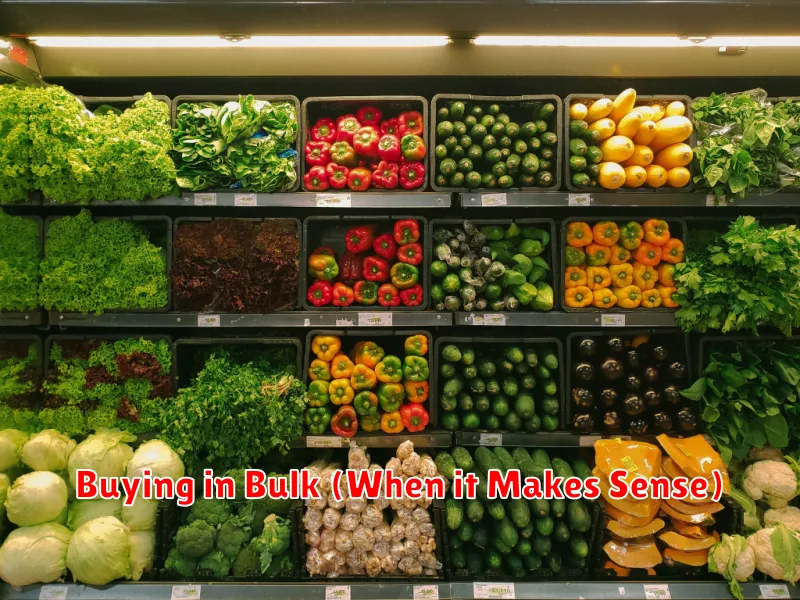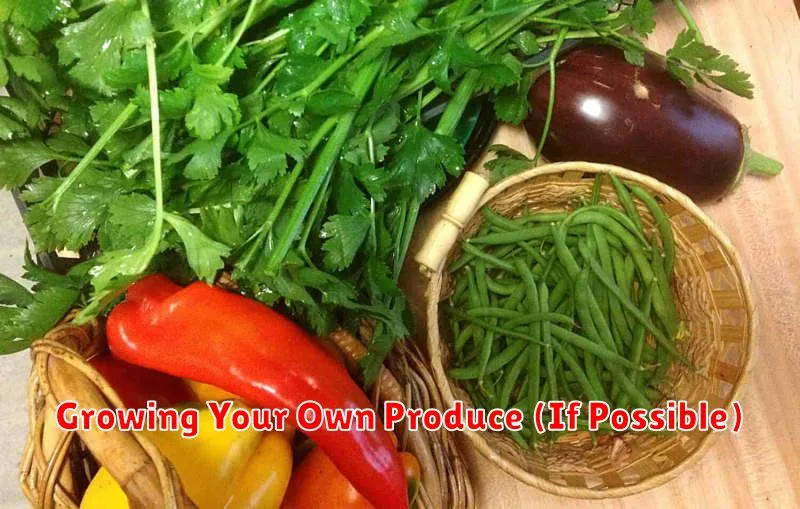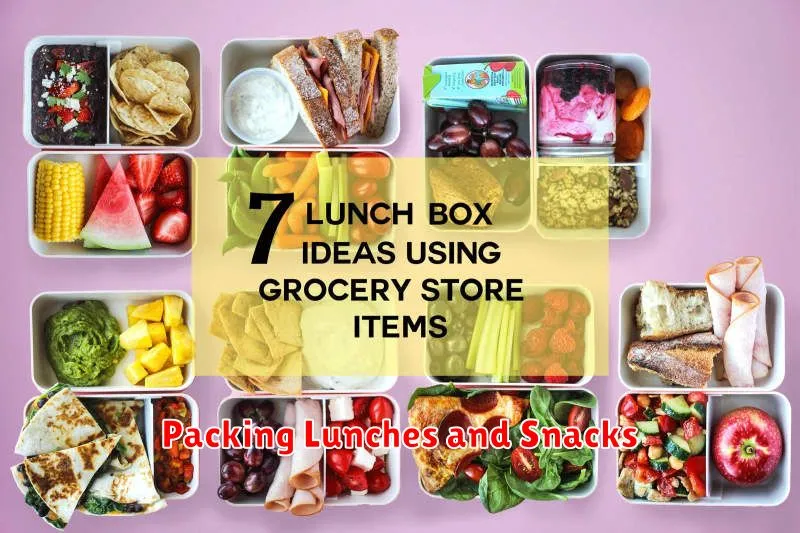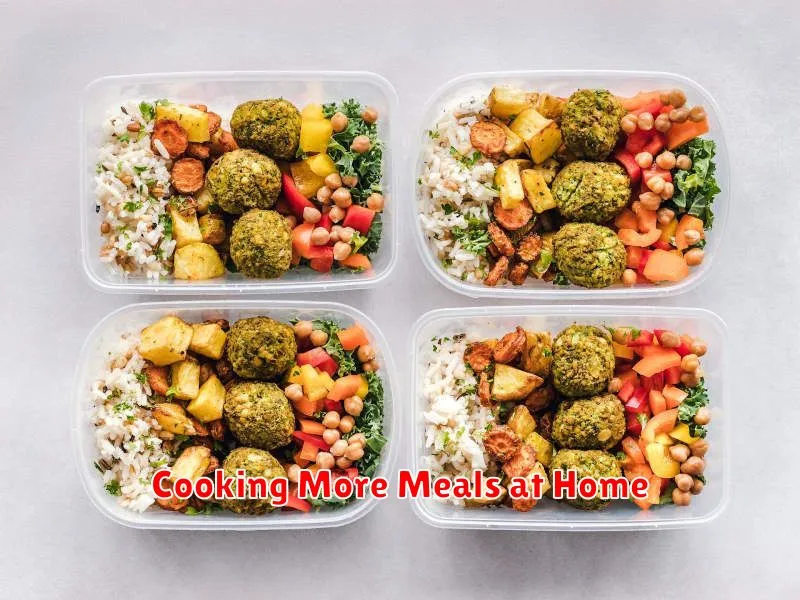Are you tired of feeling like your grocery budget is constantly being stretched thin? You’re not alone. The cost of food has been steadily rising, making it a challenge to keep your pantry stocked without breaking the bank. But don’t worry, there are plenty of ways to save money on groceries without sacrificing quality. By making a few smart changes to your shopping habits, you can stretch your budget further and enjoy delicious, nutritious meals without the financial strain.
In this article, we’ll explore a range of effective grocery saving strategies. From mastering the art of meal planning and creating a grocery list to utilizing coupons and discounts, we’ll delve into practical tips that will help you stretch your grocery budget further. We’ll also address how to avoid impulse buys and make healthier, more cost-effective choices. Let’s dive in and learn how to save money on groceries without compromising on quality.
Understanding Your Spending Habits

Before you can start saving money on groceries, it’s crucial to understand your current spending habits. This involves tracking where your money goes and identifying areas where you can cut back without compromising quality.
Start by keeping a detailed grocery log for a week or two. Note down every item you buy, its price, and the store where you purchased it. You can use a simple notebook, a spreadsheet, or a dedicated budgeting app.
Once you have your data, analyze your spending patterns. Look for areas where you might be overspending, such as:
- Impulse purchases: Do you often buy items you don’t need just because they’re on sale or seem appealing?
- Pre-packaged meals: These can be convenient, but they are often more expensive than making meals from scratch.
- Brand loyalty: Do you stick to certain brands even if cheaper alternatives are available?
- Waste: Are you throwing away a lot of food due to spoilage or not using everything you buy?
Understanding your spending habits will give you valuable insights into where you can make changes to save money on groceries.
Meal Planning and Creating a Shopping List

One of the most effective ways to save money on groceries is through meal planning. By planning your meals in advance, you can create a comprehensive shopping list that ensures you only purchase the ingredients you need. This prevents impulsive purchases and helps you avoid wasting food.
Start by brainstorming a week’s worth of meals, considering your family’s preferences and dietary restrictions. Remember to incorporate a variety of dishes to avoid monotony. Once you have your meal plan, create a detailed shopping list, categorizing items by aisle to streamline your shopping trip.
Meal planning also encourages using leftovers creatively, reducing food waste and maximizing your grocery budget. For instance, if you’re cooking a roast chicken, consider using the leftover chicken in salads, sandwiches, or soups throughout the week.
Taking Advantage of Sales and Discounts

One of the most effective ways to save money on groceries is by taking advantage of sales and discounts. Supermarkets often offer discounts on specific items or brands, and it’s worth checking their weekly flyers or online ads to see what’s on sale. You can also sign up for store loyalty programs to receive exclusive deals and coupons.
It’s important to note that not all sales are created equal. Some discounts may be on items you don’t need or items you rarely use. Before buying anything on sale, make sure it’s something you actually need and use, and compare prices to ensure it’s a genuine bargain. Look for items on sale that are staples in your pantry and refrigerator. Consider buying in bulk if you have the space to store items and will use them before they expire. This can often save you money per unit. Also, check the expiration dates to ensure that the items are not about to expire.
Buying in Bulk (When it Makes Sense)

Buying in bulk can be a great way to save money on groceries, but it’s not always the best option. You need to consider a few factors before you start stocking up on everything in sight.
First, think about storage space. Do you have room to store large quantities of food? If you don’t have a spacious pantry or freezer, you’ll be wasting money if the food spoils before you can use it.
Second, consider the shelf life of the items you’re buying. Non-perishable items, such as canned goods, pasta, and rice, are good choices for bulk buying. However, perishable items like fresh produce and meat are best bought in smaller quantities unless you have a reliable system for storing them correctly.
Finally, think about how much you’ll actually use the food you buy in bulk. It’s great to get a good deal, but don’t buy more than you’ll realistically eat. You’ll end up wasting money and food if you buy too much.
Comparing Prices and Using Store Apps

One of the most effective ways to save money on groceries is to compare prices across different stores. You can do this by visiting multiple stores in person, but it’s much easier to use store apps. Most major grocery chains have their own apps that allow you to browse their weekly ads, create shopping lists, and even order groceries for pickup or delivery. This makes it easy to quickly see what’s on sale at different stores and find the best deals.
Store apps can also be helpful for comparing prices of specific items. Many apps have a feature that lets you scan a product’s barcode to see its price at other stores. This can be especially helpful for finding the lowest price on staple items that you buy regularly.
Beyond comparing prices, store apps often offer other features that can help you save money. Many apps have digital coupons that you can clip and redeem at checkout. Some apps also allow you to create shopping lists and track your spending, which can help you stay on budget and avoid impulse buys.
Choosing Generic Brands Over Name Brands

One of the easiest ways to save money on groceries is to choose generic brands over name brands. Often, generic brands are made in the same factories as name brands, using the same ingredients but without the expensive marketing and packaging. This means you can get the same quality product at a much lower price. Some people are hesitant to switch to generic brands because they worry about the quality. However, there are many ways to ensure you’re getting a quality product even when you’re choosing generic brands.
Before making a switch, do a little research. Check online reviews to see what other consumers are saying about the quality of the generic brand compared to the name brand. You can also compare the ingredients lists of both brands. If they’re similar, the quality should be similar as well. If you’re not sure about a particular product, try buying a small size of the generic brand first. If you like it, you can then buy the larger size.
There are many different generic brands available, and some are better than others. Don’t be afraid to experiment with different brands to find the ones you like best. Once you’ve found a few brands you trust, you can save a significant amount of money on your grocery bill by choosing generic brands over name brands.
Reducing Food Waste at Home

One of the simplest and most effective ways to save money on groceries is to reduce food waste. When you throw away food, you’re essentially throwing away money. By taking steps to use what you buy and avoid spoilage, you can significantly reduce your grocery bill without sacrificing quality.
Here are some practical tips to help you cut down on food waste at home:
- Plan your meals: Before you head to the grocery store, take a few minutes to plan out your meals for the week. This will help you avoid impulse purchases and ensure you only buy what you need.
- Use a shopping list: Stick to your list and avoid buying items you don’t need. This is especially important when you’re feeling hungry or tempted by sale items.
- Store food properly: Knowing how to properly store your groceries helps prevent spoilage. Keep fruits and vegetables in the refrigerator’s crisper drawer, and store meat and poultry in the coldest part of the refrigerator.
- Use a “first-in, first-out” approach: When you store your groceries, place the older items in the front and the newer items in the back. This will help ensure you use the older items first.
- Get creative with leftovers: Instead of throwing away leftovers, get creative and use them in new dishes. You can turn leftover chicken into a salad, use leftover rice in stir-fries, or make soup with leftover vegetables.
- Compost food scraps: Composting allows you to recycle food scraps and turn them into nutrient-rich soil for your garden.
By implementing these simple tips, you can significantly reduce food waste and save money on your groceries. Reducing food waste is not only good for your wallet, it is also good for the environment. Remember, every little bit helps!
Exploring Local Farmers Markets

One of the best ways to save money on groceries without sacrificing quality is by exploring local farmers markets. These markets offer a wide variety of fresh, seasonal produce, often at lower prices than supermarkets. Many markets also have vendors selling meat, dairy, eggs, honey, and other local products. By purchasing directly from the farmers, you can cut out the middleman and save money.
Shopping at farmers markets also offers a great opportunity to support local businesses and contribute to your community. Farmers often have a deep understanding of their crops and can provide valuable information about how to prepare and store them. This can lead to less food waste and a more sustainable approach to eating.
Farmers markets are a great way to discover new and exciting ingredients. You can find unique varieties of fruits and vegetables that are not always available in supermarkets. Many markets also have vendors selling prepared foods, making it easy to find a quick and delicious lunch or dinner.
If you are looking for a way to save money on groceries while enjoying fresh, high-quality food, be sure to check out your local farmers markets.
Growing Your Own Produce (If Possible)

If you have some space, even a small balcony or windowsill, growing your own fruits and vegetables can be a rewarding and cost-effective way to add fresh produce to your diet. You can save money on grocery bills and enjoy the satisfaction of eating food you’ve cultivated yourself. While starting a garden requires an initial investment in seeds, soil, and tools, the long-term savings and health benefits can outweigh the initial cost. Plus, fresh-picked produce is simply tastier and more nutritious.
There are numerous resources available to help you get started, including online guides, gardening books, and local community gardens. You can also find helpful advice from experienced gardeners in your neighborhood. Start small and gradually expand your garden as you gain experience. Even growing a few herbs in pots can make a difference.
Packing Lunches and Snacks

One of the easiest ways to save money on groceries is by packing your own lunches and snacks. Eating out can quickly add up, and it’s often less healthy than preparing your own food. By taking the time to pack a lunch and snacks, you’ll save money and control what goes into your body.
Start by planning your meals and snacks for the week. This will help you buy only the ingredients you need and prevent food waste. You can find plenty of healthy and affordable lunch and snack ideas online. Some popular options include sandwiches, salads, wraps, fruits, vegetables, and yogurt.
Make sure you have the right containers to pack your food. You can find reusable containers in many different sizes and shapes at most grocery stores. Look for containers that are leak-proof and easy to clean.
If you’re looking for even more ways to save money, try making your own snacks and meals. You can find recipes online for everything from granola bars to homemade yogurt. By making your own food, you’ll save money and know exactly what’s going into it.
Cooking More Meals at Home

One of the most effective ways to save money on groceries is to cook more meals at home. Eating out or ordering takeout can quickly drain your budget, and by preparing your own meals, you have complete control over the ingredients and portion sizes. This allows you to avoid unnecessary additives and preservatives, often found in processed foods and restaurant dishes.
Cooking at home doesn’t have to be time-consuming or complicated. Start by choosing simple recipes that you enjoy and that use readily available ingredients. Consider meal prepping on weekends to prepare lunches for the week ahead, saving time and effort during busy days. You can also explore new recipes and cuisines, discovering new flavors and expanding your culinary repertoire.
Remember, cooking at home isn’t about sacrificing quality. It’s about creating delicious and nutritious meals that cater to your preferences and needs. By embracing home-cooked meals, you can enjoy a more mindful and cost-effective approach to eating, without compromising on taste or satisfaction.

